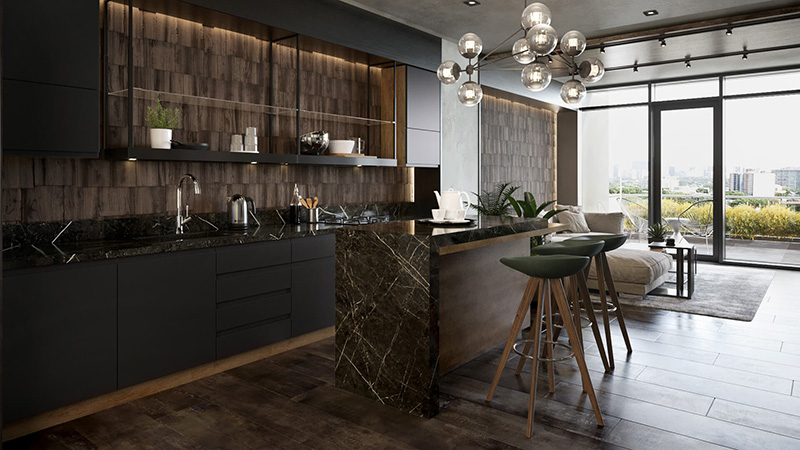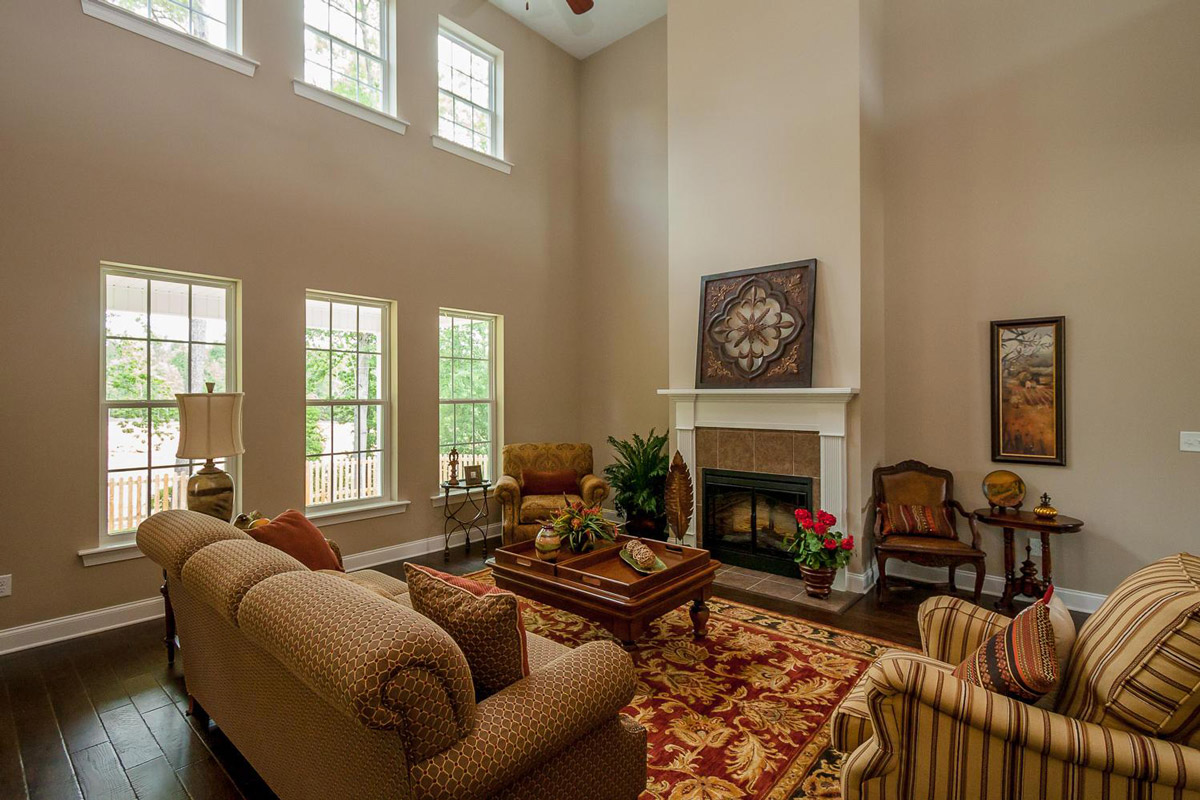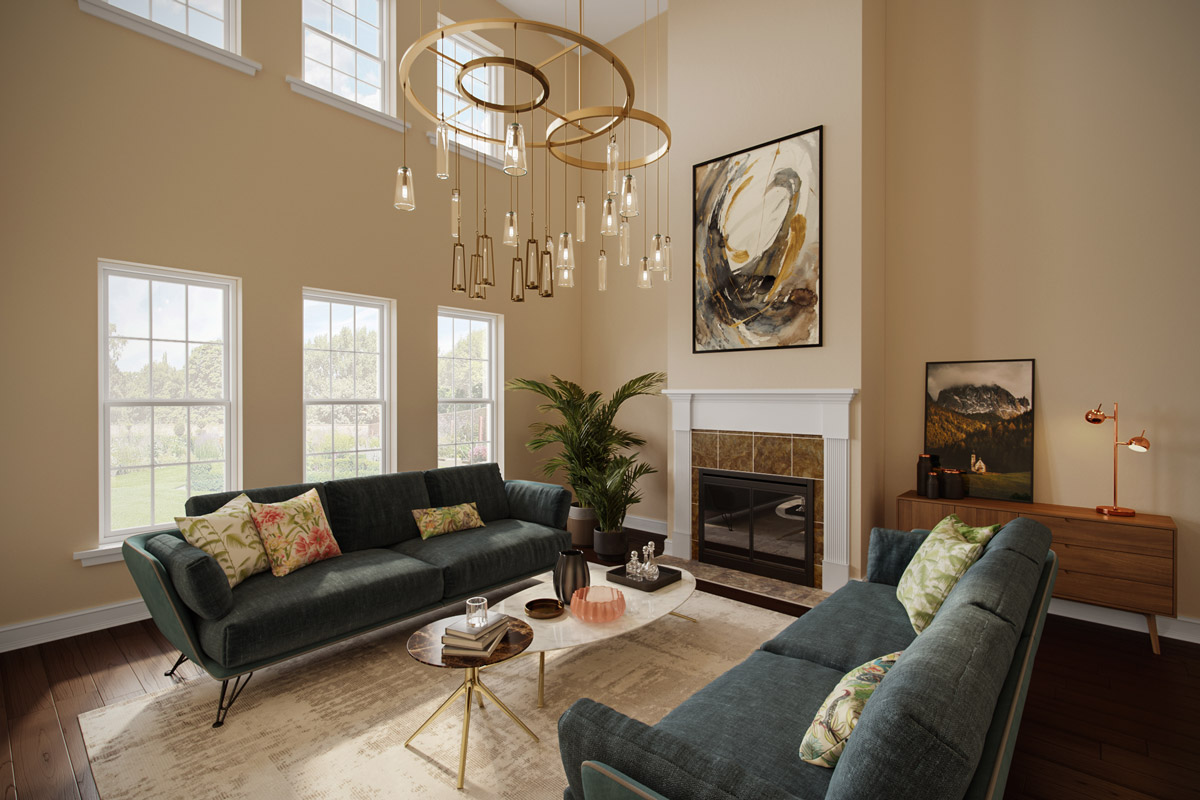Just as digital solutions have replaced traditional photosets for manufacturers, virtual staging is slowly but surely replacing physical staging for realtors and real estate marketers. Virtual furniture arrangement is a reasonable solution in cases when properties look on the photo much worse than they are in life. Let’s be honest, empty houses don’t sell well because it’s impossible to catch prospects’ attention with photos of white empty boxes. Therefore, a realtor needs to find a way to get stunning lively visuals for listings quickly and economically.
However, there are so many CG specialists and studios on the market and everyone names different prices. For somebody who is ordering digital staging for the first time, it’s unclear how virtual staging pricing is formed and what it depends on. To help realtors to understand CG studios’ pricing, we made a list of 5 key factors that affect the cost of virtual staging services. So, without further ado, let’s get into it!
#1. Type of Contractors

There are many CG studios and freelancers on the market, and of course, the pricing is different everywhere. Probably, the cheapest solution is to find a freelancer with a nice portfolio and order virtual staging from them. However, there’s no guarantee that they will provide stunning visuals and finish the project on time. In fact, a realtor should better pray that this CG artist won’t disappear all of a sudden, as it often happens with freelancers.
When a real estate marketer chooses a CG studio with great experience and a good reputation, they, most likely, will pay them more than they would in a freelancer case. However, it’s the most reliable option that provides guaranteed and top-quality results on time. In addition, the professional studio has a large staff of CG experts, the latest software and hardware, and even their own base of quality 3D models. A good studio values its reputation most of all and puts its customers first. Therefore, a realtor is likely to be satisfied with both the virtual staging and the communication process.
#2. Type of Virtual Staging Service
In fact, virtual staging services involve not only filling an empty room with digital furniture. CG experts can also replace the old furniture with a new one, completely renovate both interiors and exteriors, and even create motion solutions, such as a virtual tour around the property.
Of course, virtual staging pricing depends on the type of service. The amount of effort that CG artists spend to fill an empty room with furnishings is significantly different from the effort spent on a full house renovation. In turn, exterior renovation requires more time and work than the interior one. And of course, a 360 virtual tour and a 3D floor plan are the most expensive services. However, in terms of the visual effect they make on prospects, these two are probably the most catchy types of virtual staging solutions.
#3. Amount of Pictures

Unlike physical staging where a realtor pays for the rental of each piece of furniture and decor, the virtual staging pricing policy is different. CG artists are not limited by a catalog and a warehouse when they make the most realistic virtual staging. They can put in as many 3D models in a scene as needed without additional charging. The price of CG services depends on the number of photos because CG experts need to furnish every room and set up new cameras for each shot. In the end, the more photos a real estate marketer wants, the more work CG artists have to do, hence, the higher will be the price.
However, far-sighted CG studios have even more convenient solutions for their clients. For example, our company offers several packages for virtual staging. Our bestseller pack is average in price and includes from 6 to 35 pictures. Surely, realtors can choose another one with even more images, but quite frankly, 35 photos are usually enough to show the middle-sized house.
#4. Turnaround Time

There’ a golden rule for any type of service — the more haste, the higher the cost of work. Same in the CG industry. To take up an urgent virtual staging project, studio managers should put aside other tasks and allocate additional CG specialists for a new one. Surely, the complexity of the job elongates working hours too. In short, all the time that a studio team spends on creating CG imagery determines virtual staging pricing.
#5. Corrections

During the working process, clients usually make small corrections and suggestions to the project. This is totally fine, in fact, adjustments indicate organic workflow. However, when virtual staging is nearing the finish line and a realtor continues to change key details, it delays the deadline. No doubt, so many things could change and it doesn’t always depend on the realtor. Nevertheless, CG artists have to do double work and it will affect virtual staging pricing accordingly.
To reduce the number of corrections, real estate marketers must send the studio a clear brief. In this brief, they should mention what is the target audience of this property and what interior style they want with some references. If a studio gets a full brief from the very first day of collaboration, then, most likely, fewer adjustments will be needed during the project. Hence, the final cost of virtual staging won’t rise.
Virtual staging pricing depends on the turnaround time and man-hours. When a digital staging studio takes on an urgent task, its project managers allocate more CG specialists who most likely will work overtime. Surely, all efforts and extra shifts will be reflected in the final pricing for staging services. Repetitive corrections also lengthen the turnaround time and increase the cost even more. And, of course, all virtual staging services go at different prices. For example, a 360 tour and a 3D plan are more time and effort-consuming than a static staging of several rooms, hence, they cost more.
A realtor who decided to collaborate with a well-reputed virtual staging company can trust their project to the team of CG experts and kick back. A multi-discipline studio guarantees quality, a wide range of virtual staging services, smooth communication and, of course, a short turnaround time. Surely, the speed depends on the complexity of a project, but experienced CG professionals do photoreal virtual staging in 48 hours as average TAT.
Need jaw-dropping digital staging? Try our virtual staging services to get stunning images of fully-furnished home in the shortest term!












Leave a Reply
Want to join the discussion?Feel free to contribute!